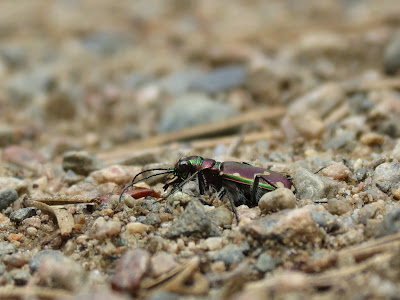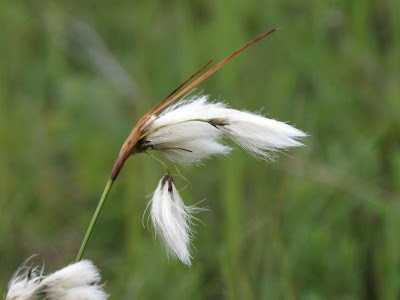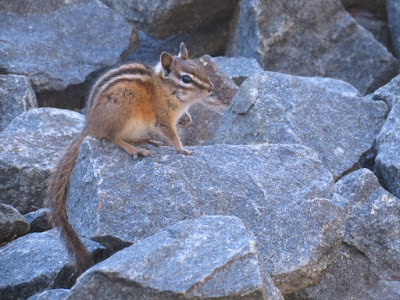Here's a random selection of photos that didn't make it into the last post. All are still from the Rio Grande Valley.
Greater Roadrunners weren't common, but I think we still saw them most
days. The shape gives away that this a species of cuckoo, but its
behaviour is very different from our skulky caterpillar-eating cuckoos
in Ontario. Roadrunners eat various large insects, lizards and snakes.
Clay-colored Thrush is basically a washed-out American Robin. Both are in the genus
Turdus, a very succesful group. Most parts of the world have at least one species of
Turdus that is one of the most common species of bird. Many parts of Europe and Asia have five or more species overlapping in slightly different niches. For example, Western Europe has Common Blackbird, Song Thrush, Mistle Thrush, Fieldfare, Redwing and Ring Ouzel. Meanwhile in North America, American Robin can be found in every habitat from the deep south to the low arctic, and a couple of other species barely squeak in over the Mexican border.
The chachalacas, guans and currasows comprise a unique Neotropical group of gallinaceous birds. They are generally somewhat more arboreal than most of their relatives. The most northerly species, Plain Chachalaca, is quite common in southern Texas.
A variety of hummingbirds can be found wintering around feeders in southern Texas. The most common is Buff-bellied.
We saw two other species of hummingbirds: this Ruby-throated and a Broad-billed.
I've seen Yellow-crowned Night-heron
in Ontario, but that was a young bird, so it was nice to get good looks at a large group of roosting adults. We had around twenty in view at this spot, along with Black-crowned Night-herons, Great Egrets, Snowy Egrets and a Green Heron. Although I generally think of herons as fish-eaters, Yellow-crowned Night-herons eat mostly crabs and crayfish.
Common Pauraques were exceedingly abundant everywhere we stayed in the evening, and it was not uncommon to be able to hear four or more simultaneously. We also had several pointed out to us - the camouflage is incredible. Later in the trip we would also hear several Common Poorwill for our second species of nightjar.
Sprague's Pipit is an uncommon and secretive bird of the prairies. We visited a known site for them, but had to spend a lot of time to finally get decent looks at one. We probably worked harder for this bird than any other species on the trip. Well, at least for a bird that we did end up seeing! We wasted a lot of time looking unsuccesfully for Rose-throated Becard, Smith's, Chestnut-collared and McCown's Longspur and Mountain Plover.
Lark Sparrows can be surprisingly inconspicuous even when foraging on open lawns.
I think this is a Texas Spotted Whiptail (
Cnemidophorus gularis).
One of many species that only barely make it into the United States in this part of Texas is Red-billed Pigeon. We saw this group of six two days in a row, but never got exceptionally good view. Red-billed Pigeon can be a hard bird to track down, but both days we pulled up to see this flock sitting in plain view. The smaller bird with them is a White-winged Dove.
Golden-fronted Woodpeckers replaced Red-bellieds as soon as we got much south of Houston. They didn't really seem to differ in any significant way except minor differences in plumage and voice.
One of the most common shrubs in drier areas is Mesquite (
Prosopis). These plants are invasive in many parts of the world including in Texas where it is native. The flowers sure smelled nice though!
A species we only saw a few times was Common Ground-dove. This tiny species actually came into pishing on one occasion, something which I've never had any pigeon or dove do before!
Northern Cardinals were everywhere, but in dry habitats they were joined by Pyrrhuloxias.
One of my biggest highlights of the trip was seeing Collared Peccaries (known as Javelinas locally). Although somewhat pig-like, peccaries differ in fundamental ways and have been evolving separately for some forty million years!






















































